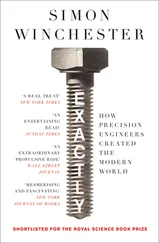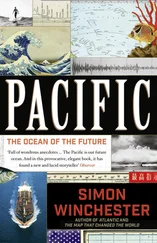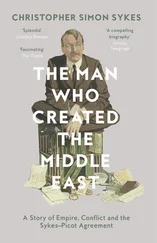Title Page Copyright Dedication Epigraph List of Illustrations Prologue Chapter 1: Stars, Seconds, Cylinders, and Steam Chapter 2: Extremely Flat and Incredibly Close Chapter 3: A Gun in Every Home, a Clock in Every Cabin Chapter 4: On the Verge of a More Perfect World Chapter 5: The Irresistible Lure of the Highway Chapter 6: Precision and Peril, Six Miles High Chapter 7: Through a Glass, Distinctly Chapter 8: Where Am I, and What Is the Time? Chapter 9: Squeezing Beyond Boundaries Chapter 10: On the Necessity for Equipoise Afterword: The Measure of All Things Acknowledgments A Glossary of Possibly Unfamiliar Terms Bibliography Index About the Author Also by Simon Winchester About the Publisher
Copyright Copyright Dedication Epigraph List of Illustrations Prologue Chapter 1: Stars, Seconds, Cylinders, and Steam Chapter 2: Extremely Flat and Incredibly Close Chapter 3: A Gun in Every Home, a Clock in Every Cabin Chapter 4: On the Verge of a More Perfect World Chapter 5: The Irresistible Lure of the Highway Chapter 6: Precision and Peril, Six Miles High Chapter 7: Through a Glass, Distinctly Chapter 8: Where Am I, and What Is the Time? Chapter 9: Squeezing Beyond Boundaries Chapter 10: On the Necessity for Equipoise Afterword: The Measure of All Things Acknowledgments A Glossary of Possibly Unfamiliar Terms Bibliography Index About the Author Also by Simon Winchester About the Publisher
William Collins
An imprint of HarperCollins Publishers
1 London Bridge Street
London SE1 9GF
www.WilliamCollinsBooks.com
This eBook first published in Great Britain by William Collins in 2018
Copyright © Simon Winchester 2018
Cover images © Getty Images
Simon Winchester asserts the moral right to be identified as the author of this work
Much of the material here relating to the Tohoku Tsunami of March 2011 is taken with permission from an essay by Simon Winchester in the New York Review of Books , November 9, 2017.
Image of space on title page by Yuriy Mazur/Shutterstock, Inc.
A catalogue record for this book is available from the British Library
All rights reserved under International and Pan-American Copyright Conventions. By payment of the required fees, you have been granted the non-exclusive, non-transferable right to access and read the text of this e-book on-screen. No part of this text may be reproduced, transmitted, down-loaded, decompiled, reverse engineered, or stored in or introduced into any information storage and retrieval system, in any form or by any means, whether electronic or mechanical, now known or hereinafter invented, without the express written permission of HarperCollins
Source ISBN: 9780008241766
Ebook Edition © May 2018 ISBN: 9780008241797
Version: 2018-05-01
Dedication Dedication Epigraph List of Illustrations Prologue Chapter 1: Stars, Seconds, Cylinders, and Steam Chapter 2: Extremely Flat and Incredibly Close Chapter 3: A Gun in Every Home, a Clock in Every Cabin Chapter 4: On the Verge of a More Perfect World Chapter 5: The Irresistible Lure of the Highway Chapter 6: Precision and Peril, Six Miles High Chapter 7: Through a Glass, Distinctly Chapter 8: Where Am I, and What Is the Time? Chapter 9: Squeezing Beyond Boundaries Chapter 10: On the Necessity for Equipoise Afterword: The Measure of All Things Acknowledgments A Glossary of Possibly Unfamiliar Terms Bibliography Index About the Author Also by Simon Winchester About the Publisher
For Setsuko
And in loving memory of my father,
Bernard Austin William Winchester, 1921–2011,
a most meticulous man
Epigraph Epigraph List of Illustrations Prologue Chapter 1: Stars, Seconds, Cylinders, and Steam Chapter 2: Extremely Flat and Incredibly Close Chapter 3: A Gun in Every Home, a Clock in Every Cabin Chapter 4: On the Verge of a More Perfect World Chapter 5: The Irresistible Lure of the Highway Chapter 6: Precision and Peril, Six Miles High Chapter 7: Through a Glass, Distinctly Chapter 8: Where Am I, and What Is the Time? Chapter 9: Squeezing Beyond Boundaries Chapter 10: On the Necessity for Equipoise Afterword: The Measure of All Things Acknowledgments A Glossary of Possibly Unfamiliar Terms Bibliography Index About the Author Also by Simon Winchester About the Publisher
These brief passages from works by the writer Lewis Mumford (1895–1990) might usefully be borne in mind while reading the pages that follow.
The cycle of the machine is now coming to an end. Man has learned much in the hard discipline and the shrewd, unflinching grasp of practical possibilities that the machine has provided in the last three centuries: but we can no more continue to live in the world of the machine than we could live successfully on the barren surface of the moon.
— THE CULTURE OF CITIES (1938)
We must give as much weight to the arousal of the emotions and to the expression of moral and esthetic values as we now give to science, to invention, to practical organization. One without the other is impotent.
— VALUES FOR SURVIVAL (1946)
Forget the damned motor car and build the cities for lovers and friends.
— MY WORKS AND DAYS (1979)
Contents
Cover
Title Page Title Page Copyright Dedication Epigraph List of Illustrations Prologue Chapter 1: Stars, Seconds, Cylinders, and Steam Chapter 2: Extremely Flat and Incredibly Close Chapter 3: A Gun in Every Home, a Clock in Every Cabin Chapter 4: On the Verge of a More Perfect World Chapter 5: The Irresistible Lure of the Highway Chapter 6: Precision and Peril, Six Miles High Chapter 7: Through a Glass, Distinctly Chapter 8: Where Am I, and What Is the Time? Chapter 9: Squeezing Beyond Boundaries Chapter 10: On the Necessity for Equipoise Afterword: The Measure of All Things Acknowledgments A Glossary of Possibly Unfamiliar Terms Bibliography Index About the Author Also by Simon Winchester About the Publisher
Copyright Copyright Copyright Dedication Epigraph List of Illustrations Prologue Chapter 1: Stars, Seconds, Cylinders, and Steam Chapter 2: Extremely Flat and Incredibly Close Chapter 3: A Gun in Every Home, a Clock in Every Cabin Chapter 4: On the Verge of a More Perfect World Chapter 5: The Irresistible Lure of the Highway Chapter 6: Precision and Peril, Six Miles High Chapter 7: Through a Glass, Distinctly Chapter 8: Where Am I, and What Is the Time? Chapter 9: Squeezing Beyond Boundaries Chapter 10: On the Necessity for Equipoise Afterword: The Measure of All Things Acknowledgments A Glossary of Possibly Unfamiliar Terms Bibliography Index About the Author Also by Simon Winchester About the Publisher William Collins An imprint of HarperCollins Publishers 1 London Bridge Street London SE1 9GF www.WilliamCollinsBooks.com This eBook first published in Great Britain by William Collins in 2018 Copyright © Simon Winchester 2018 Cover images © Getty Images Simon Winchester asserts the moral right to be identified as the author of this work Much of the material here relating to the Tohoku Tsunami of March 2011 is taken with permission from an essay by Simon Winchester in the New York Review of Books , November 9, 2017. Image of space on title page by Yuriy Mazur/Shutterstock, Inc. A catalogue record for this book is available from the British Library All rights reserved under International and Pan-American Copyright Conventions. By payment of the required fees, you have been granted the non-exclusive, non-transferable right to access and read the text of this e-book on-screen. No part of this text may be reproduced, transmitted, down-loaded, decompiled, reverse engineered, or stored in or introduced into any information storage and retrieval system, in any form or by any means, whether electronic or mechanical, now known or hereinafter invented, without the express written permission of HarperCollins Source ISBN: 9780008241766 Ebook Edition © May 2018 ISBN: 9780008241797 Version: 2018-05-01
Читать дальше












